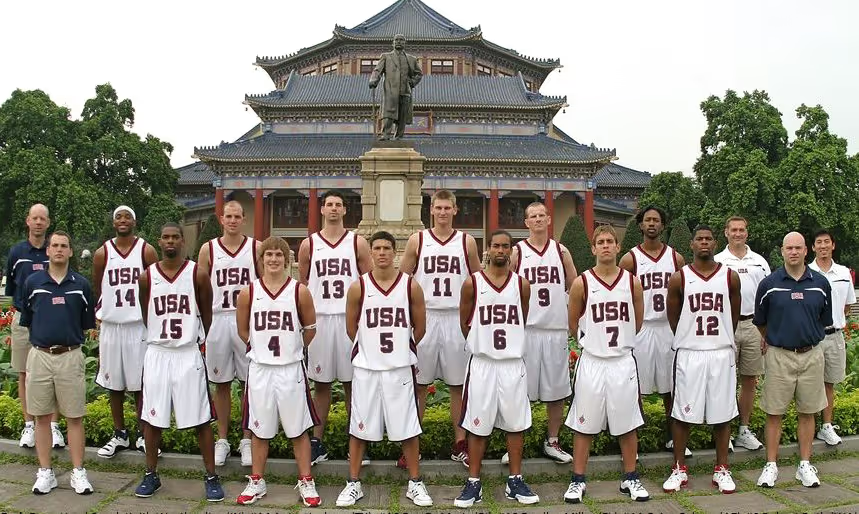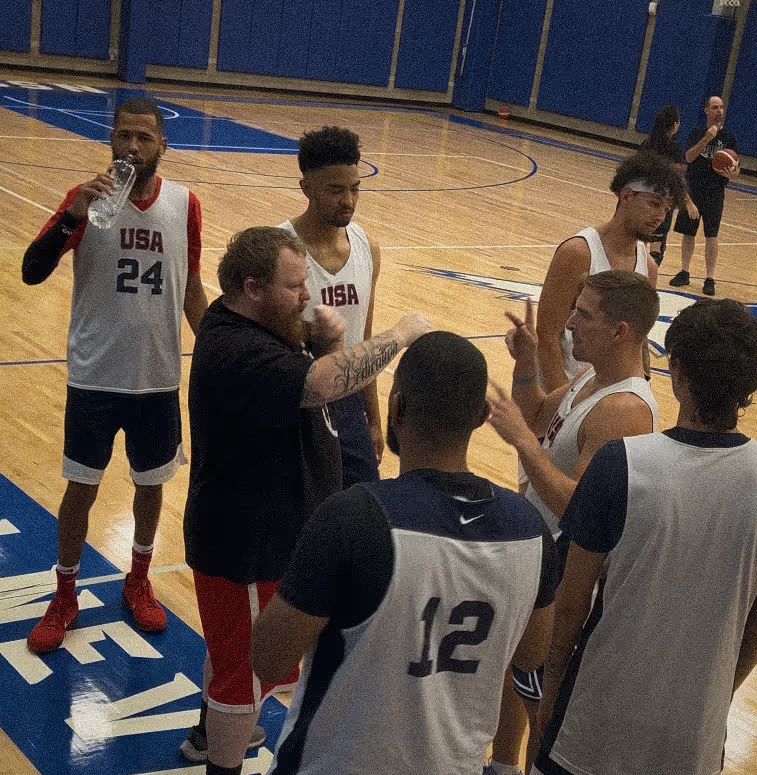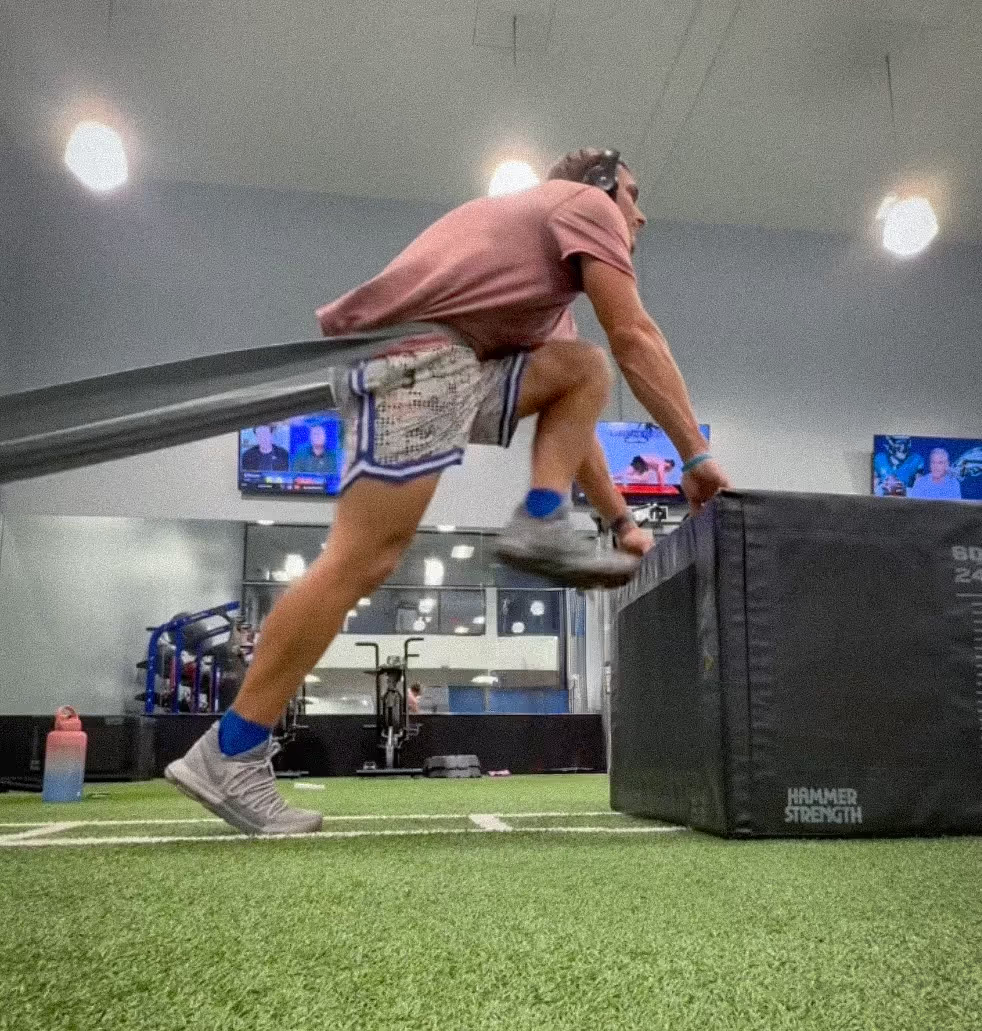For Jon Mowl, basketball isn’t just a sport — it’s a language. The rhythm of the game, the glance of a teammate, the unspoken understanding of movement and trust — these are the moments that have defined his life on and off the court. A fourth-generation Deaf athlete, Jon has represented Team USA across three sports — basketball, team handball, and golf — and stands among the most experienced and respected players in Deaflympics history.
Beyond competition, Jon has become a driving force for accessibility and innovation through Play With ASL, a platform using gamification to make ASL learning engaging and inclusive. In this Q&A, he shares how his Deaflympics journey began, what makes Deaf basketball uniquely powerful, and how sport continues to fuel his mission to break down communication barriers worldwide.
My Deaflympics journey really began before I could even walk. My mom loves to remind me of the tuxedo photo — baby me in a vest and red bow tie, crying nonstop until someone handed me a basketball. Instantly, I lit up with the biggest smile. They tried to take the ball away for the photo, and I cried again. So, my first “official” basketball picture ended up being me in a tux with a basketball in hand. You could say I’ve been stubbornly committed to the game since day one.
Fast forward to 2009, when I made my Deaflympics debut in Taipei playing basketball — and winning gold. But my first taste of international competition came even earlier, at the 2007 World Deaf Basketball Championship in Guangzhou, China. Each step along the way, the weight of putting on a USA jersey never got lighter — it means something more. It’s not just fabric; it’s the journey, the sacrifices, and the responsibility of representing the Deaf community on the world stage.

I’ve competed in basketball, team handball, and even golf, but basketball always calls me back. It’s the best sport in the world. Every player brings their own signature style. The game’s rhythm and flow emerge as ten people share one ball and the balance of the floor constantly shifts. Every game is different. It’s beautiful, chaotic, and disciplined all at once. That’s what keeps me coming back.

People often assume Deaf basketball is “silent.” The truth? It’s actually loud — just in a visual way. We’re constantly pointing, waving our arms, and using eye contact to make sure we’re on the same page. Communication happens everywhere: during timeouts, dead-ball plays, on-ball screens, even mid-transition. If you watch closely, you’ll see a whole symphony of signals flying around the court.
What makes it harder — and more beautiful — is when you can’t get someone’s attention because they’re facing the other way. That’s when chemistry kicks in. We learn to anticipate each other’s movements, make plays by instinct, and trust our flow. It starts to feel like telepathy — and honestly, sometimes it is. That’s what makes Deaf basketball special at the elite level. It’s not about hearing or not hearing; it’s about building a deeper connection with your teammates so the game flows without words.
Every Deaf athlete I meet could be my favorite story. The connections are endless, and social media helps us stay in touch long after the Games. We often swap video messages, and even if our sign languages differ, that’s usually enough to break through the language barrier.
One of my recent favorites was with an athlete from Lithuania who started asking me about housing in America — whether Deaf people usually rent or own, what houses look like, and how much it costs. I explained the rent prices in Washington, D.C., and his eyes got wide. When I clarified it was per month and not per year, his jaw dropped, and he buried his head in his arms. Next thing I know, he’s shouting about how Lithuania is better than America. We were cracking up, trading jokes, and learning about each other’s worlds. That’s the beauty of the Deaflympics. It's a competition, yes, but it’s also a cultural exchange at its best.
One “off-the-court” moment that has stayed with me came at the Deaflympics in Brazil. The First Lady of Brazil delivered the entire opening speech in Sign Language — a powerful gesture of inclusion that set the tone for the Games. Then, when Team Ukraine walked out during the ceremony, the unity and support in the arena were overwhelming. Goosebumps everywhere. It was a reminder that the Deaflympics is more than sport — it’s a global gathering that celebrates culture, resilience, and pride.

Being seen as a role model is a responsibility I don’t take lightly. When younger Deaf athletes look at me, I want them to see someone who has walked the same road, faced the same challenges, and still performed at an elite level. To me, being a role model is about more than what happens on the court. It’s about showing perseverance, leadership, cultural pride, and a commitment to excellence in everything I do.
Those values guide my work with Play With ASL, where we’re building tools that break down barriers and open doors for the next generation. Just like a good coach creates opportunities for players, I want to create opportunities for learners — especially Deaf kids — to grow, connect, and thrive.
To young athletes preparing for their own journeys, I say this: play hard and work harder, even when it’s tough. Lead with integrity, respect the process, and never underestimate the power of caring — not just for yourself, but for those who will come after you. Carry those values with you, and you’ll already be winning in sports and in life.
Cheering us on and spreading the word means the world, but here’s the part most people don’t realize: Team USA Deaflympics athletes have to pay our own way to represent our country. Unlike many other nations where the government supports their athletes, we’re left tackling huge fundraising efforts just to compete at the highest level.
That’s why consistent sponsorships and donations aren’t just helpful — they’re game-changers. They give us the freedom to focus on training, competing, and representing our community with pride, instead of stressing about travel invoices and hotel receipts.
So how can the community show up? Follow our journey, share our stories, donate if you can, and bring others along for the ride. Think of it this way: you’re not just watching Team USA — you’re on the roster with us. We’ve got the jerseys, but you’ve got the power to make sure we can actually get on the court. Join the team.

InnoCaption provides real-time captioning technology making phone calls easy and accessible for the deaf and hard of hearing community. Offered at no cost to individuals with hearing loss because we are certified by the FCC. InnoCaption is the only mobile app that offers real-time captioning of phone calls through live stenographers and automated speech recognition software. The choice is yours.
InnoCaption proporciona tecnología de subtitulado en tiempo real que hace que las llamadas telefónicas sean fáciles y accesibles para la comunidad de personas sordas y con problemas de audición. Se ofrece sin coste alguno para las personas con pérdida auditiva porque estamos certificados por la FCC. InnoCaption es la única aplicación móvil que ofrece subtitulación en tiempo real de llamadas telefónicas mediante taquígrafos en directo y software de reconocimiento automático del habla. Usted elige.